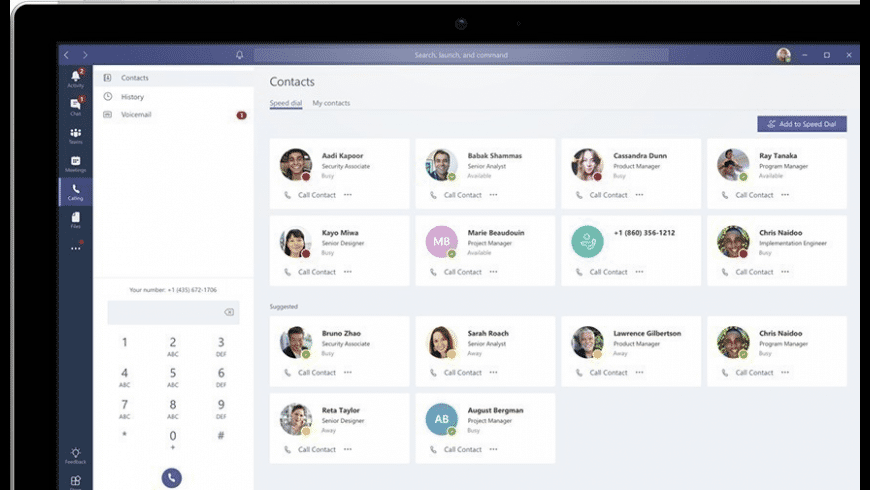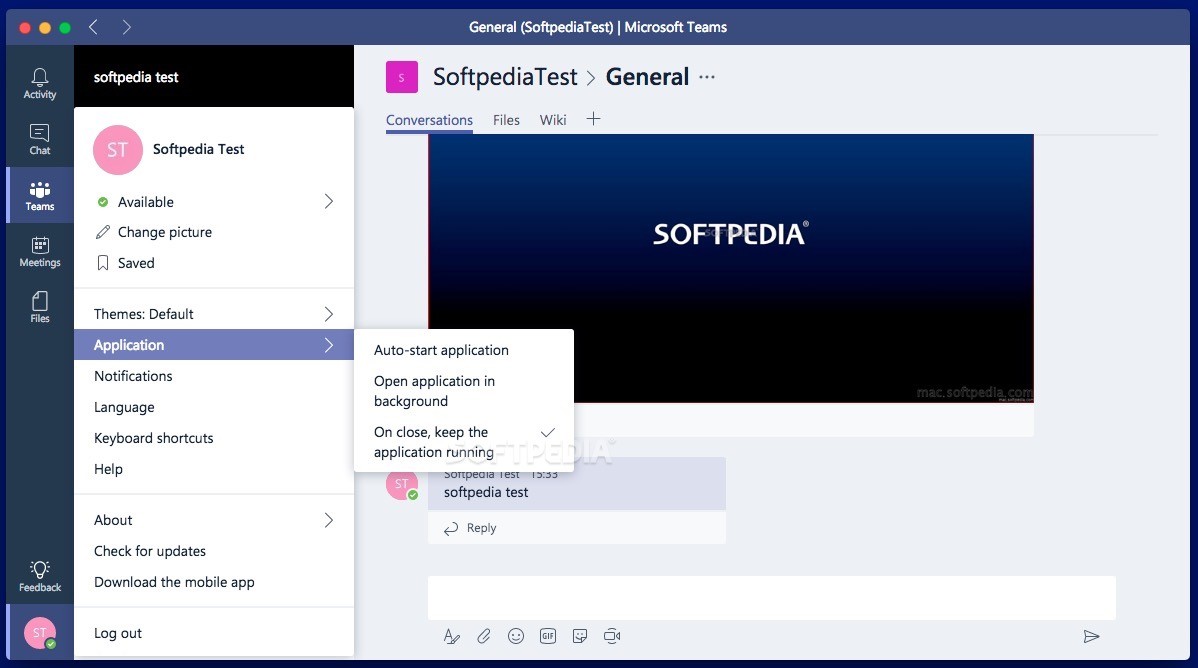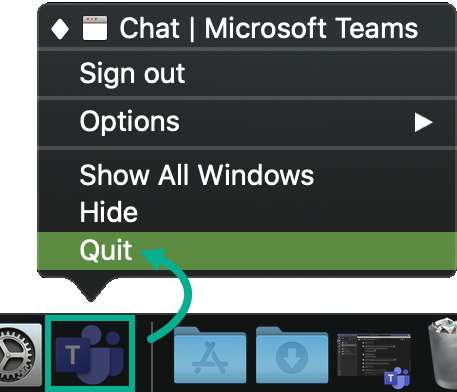Since I upgraded two of my Macs to Mojave 10.14.4 yesterday, RDP client (10.2.9 1575) has been crashing every time I use it, after only a few minutes of connection. For complete requirements for PC and Mac.2. Microsoft office 365 login for mac. This plan works with Office 2019, Office 2016, Office 2013, and Office 2011 for Mac. Debug logs show the following data flows: Microsoft Teams Crashes On Mac 2016. Connection requests to middle tier services. You can also use the Microsoft teams Android and iOS apps as well. Clear Microsoft Teams Cache. Clearing the Microsoft Teams cache can fix the app freezing and crashing. Completely shut down Microsoft Teams. Open Task Manager and make sure all Microsoft Teams related services are running in the task manager. Exit those services and processes. Microsoft Teams hack free android guides videoreviews photos and help from pro players. Changes in Microsoft Teams: - Share chat history with new participants in a group chat - Reduce the noise with mute chat - Grab someone's attention with @mention in chats - Create teams and add members from your mobile phone - Join meetings anonymously - Voicemail is now available on mobile!
With Real-Time Audio-Video, users can run Microsoft Teams in their remote sessions.
Webcam and audio devices that are connected locally to the client system are redirected to the remote sessions, and use a significantly lower bandwidth than by using USB redirection.
When you launch the Microsoft Teams application inside a remote desktop, you select VMware virtual input and output devices from menus in the application. The VMware virtual devices redirect the audio and video devices that are connected to the client machine.
- For virtual desktops, with Horizon Client for Windows 5.2 and later, Real-Time Audio-Video can redirect more than one audio and video device. The names of redirected devices in the virtual desktop are the actual device names, but with (VDI) appended, for example, C670i FHD Webcam (VDI).
- For virtual desktops, with Horizon Client for Windows 5.1 or earlier, or with a non-Windows client, Real-Time Audio-Video can redirect only one audio device and only one video device to a virtual desktop. The device names are VMware Virtual Microphone and VMware Virtual Webcam in the virtual desktop.
- For published desktops and published applications, Real-Time Audio-Video can redirect only one audio device and only one video device. The device names are Remote Audio Device and VMware Virtual Webcam in remote sessions.
To use Real-Time Audio-Video with Microsoft Teams, you must install the audio and webcam device drivers on your Horizon Client systems.
After you install Horizon Agent with Real-Time Audio-Video, Microsoft Teams works on your remote sessions without any further configuration. See Configuring Real-Time Audio-Video.
Recommendations for Using Microsoft Teams with Real-Time Audio-Video
To use Microsoft Teams with Real-Time Audio-Video, follow these recommendations:- Microsoft Teams with Real-Time Audio-Video is supported on Horizon Agent 7.9 and later on Windows, Linux, and Mac clients.
- Microsoft Teams with Real-Time Audio-Video requires a minimum 4 vCPU, 4 GB RAM configuration, with a maximum video resolution of 640 x 480 pixels. Additional vCPUs and memory configurations deliver a superior experience.
- The default video resolution for Real-Time Audio-Video is 320 x 240 pixels. You can change the resolution by changing the setting in the VMware View Agent Configuration > View RTAV Configuration folder in the Group Policy Management Editor.
The Teams Meeting add-in lets users schedule a Teams meeting from Outlook. The add-in is available for Outlook on Windows, Mac, web, and mobile.
Teams Meeting add-in in Outlook for Windows
The Teams Meeting add-in is automatically installed for users who have Microsoft Teams and either Office 2013, Office 2016, or Office 2019 installed on their Windows PC. Users will see the Teams Meeting add-in on the Outlook Calendar ribbon.
Note
Windows upgrade key code free. Upgrade using a Windows 10 Pro product key. Select the Start button, then select Settings Update & Security Activation. Select Change product key, and then enter the 25-character Windows 10 Pro product key. Select Next to start the upgrade to Windows 10 Pro. Windows 10 Pro Serial Key. Windows 10 Pro Activator. Download the Microsoft Toolkit from Here; Open the downloaded record. Select symbol office.(Windows 10 Upgrade Product Key) Snap to initiate Windows 10 without the item key.

- There is no direct URL that links to the Teams add-in.
- There are additional considerations if your organization runs both Teams and Skype for Business. Under some circumstances, the Teams add-in is not available in Outlook. See Upgrade from Skype for Business to Teams for details.
- User permissions to execute the Regsvr32.exe file is a minimum requirement for the Teams Meeting add-in to be installed on the computer.
- If users do not see the Teams Meeting add-in, instruct them to close Outlook and Teams, then restart the Teams client first, then sign in to Teams, and then restart the Outlook client, in that specific order.
- If you are using an Office Outlook installation from the Microsoft Store, the Teams Meeting add-in isn't supported. Users who require this add-in are advised to install Click-to-Run version of Office, as outlined in Office on Windows 10 in S mode article.
Teams Meeting add-in in Outlook for Mac

The Teams Meeting button in Outlook for Mac will appear in the Outlook for Mac ribbon if Outlook is running production build 16.24.414.0 and later and is activated with a Microsoft 365 or Office 365 client subscription.
The meeting coordinates (the Teams join link and dial-in numbers) will be added to the meeting invite after the user clicks Send.
Teams Meeting add-in in Outlook Web App
The Teams Meetings button in Outlook Web App will appear as part of new event creation if the user is on an early version of the new Outlook on the web. See the Outlook Blog to learn about how users can try the early version of the new Outlook on the web.
The meeting coordinates (the Teams join link and dial-in numbers) will be added to the meeting invite after the user clicks Send.
Teams Meeting add-in in Outlook mobile (iOS and Android)
The Teams Meeting button shows up in latest builds of the Outlook iOS and Android app.
The meeting coordinates (the Teams join link and dial-in numbers) will be added to the meeting invite after the user clicks Send.
Teams Meeting add-in and FindTime for Outlook

FindTime is an add-in for Outlook that helps users reach consensus on a meeting time across companies. Once the meeting invitees have provided their preferred times, FindTime sends out the meeting invite on the user's behalf. If the Online meeting option is selected in FindTime, FindTime will schedule a Skype for Business or Microsoft Teams meeting. (FindTime will use whichever has been set by your organization as the default online meeting channel.)
Note
If you saved a Skype for Business setting in your Findtime dashboard, FindTime will use that instead of Microsoft Teams. If you want to use Microsoft Teams, delete the Skype for Business setting in your dashboard.
For more information, see Schedule meetings with FindTime.
Authentication requirements
The Teams Meeting add-in requires users to sign in to Teams using Modern Authentication. If users do not use this method to sign in, they'll still be able to use the Teams client, but will be unable to schedule Teams online meetings using the Outlook add-in. You can fix this by doing one of the following:
- If Modern Authentication is not configured for your organization, you should configure Modern Authentication.
- If Modern Authentication is configured, but they canceled out on the dialog box, you should instruct users to sign in again using multi-factor authentication.
To learn more about how to configure authentication, see Identity models and authentication in Microsoft Teams. Dave file midi weckl.
Enable private meetings
Allow scheduling for private meetings must be enabled in the Microsoft Teams admin center for the add-in to get deployed. In the admin center, go to Meetings > Meeting Policies, and in the General section, toggle Allow scheduling private meetings to On.)
The Teams client installs the correct add-in by determining if users need the 32-bit or 64-bit version.
Note
Users might need to restart Outlook after an installation or upgrade of Teams to get the latest add-in.
Teams upgrade policy and the Teams Meeting add-in for Outlook
Customers can choose their upgrade journey from Skype for Business to Teams. Tenant admins can use the Teams co-existence mode to define this journey for their users. Tenant admins have the option to enable users to use Teams alongside Skype for Business (Islands mode).
When users who are in Island mode schedule a meeting in Outlook, they typically expect to be able to choose whether to schedule a Skype for Business or a Teams meeting. In Outlook on the web, Outlook Windows, and Outlook Mac, users see both Skype for Business and Teams add-ins when in Islands mode by default. You can configure a Teams meeting policy setting to control whether users in Islands mode can only use the Teams Meeting add-in or both the Teams Meeting and Skype for Business Meeting add-ins.
Due to certain limitations in the initial release, Outlook mobile can only support creating Skype for Business or Teams meetings. See the following table for details.
| Coexistence mode in the Teams admin center | Default meetings provider in Outlook mobile |
|---|---|
| Islands | Skype for Business |
| Skype for Business only | Skype for Business |
| Skype for Business with Teams collaboration | Skype for Business |
| Skype for Business with Teams collaboration and meetings | Teams |
| Teams only | Teams |
Set whether users in Islands mode can only use the Teams Meeting add-in or both the Teams Meeting and Skype for Business Meeting add-ins
As an admin, you can configure a Teams meeting policy setting to control which Outlook meeting add-in is used for users who are in Islands mode. You can specify whether users can only use the Teams Meeting add-in or both the Teams Meeting and Skype for Business Meeting add-ins to schedule meetings in Outlook.
You can only apply this policy to users who are in Islands mode and have the AllowOutlookAddIn parameter set to True in their Teams meeting policy. For steps on how to set this policy, see set the meeting provider for users in Islands mode.
Other considerations
The Teams Meeting add-in is still building functionality, so be aware of the following:

- The Teams Meeting add-in requires an Exchange mailbox for the primary user scheduling the meeting. Ensure that you have at least one Exchange mailbox configured in your Outlook profile and use it to schedule Teams meetings with the add-in. For Exchange requirements, see How Exchange and Teams interact.
- The add-in is for scheduled meetings with specific participants, not for meetings in a channel. Channel meetings must be scheduled from within Teams.
- The add-in will not work if an Authentication Proxy is in the network path of the user's PC and Teams Services.
- Users can't schedule live events from within Outlook. Go to Teams to schedule live events. For more information, see What are Microsoft Teams live events?.

Learn more about meetings and calling in Microsoft Teams.
Troubleshooting
Use the following steps to troubleshoot issues with the Teams Meeting add-in.
Teams Meeting add-in in Outlook for Windows does not show
If you cannot get the Teams Meeting add-in for Outlook to install, try these troubleshooting steps.
Download and run the Microsoft Support Recovery Assistant to perform automated troubleshooting steps and fixes.
Microsoft Teams Crashes On Mac Catalina
Alternatively, perform the following steps manually:
- Windows 7 users must install the Update for Universal C Runtime in Windows for the Teams Meeting add-in to work.
- Check that the user has a Teams Upgrade policy which enables scheduling meetings in Teams. See Upgrade from Skype for Business to Teams for more details.
- Check that the user has a Teams Meeting policy that permits the Outlook Add-in. See Manage meeting policies in Teams for more details.
- Ensure the user has the Teams desktop client installed. The meeting add-in will not be installed when only using the Teams web client.
- Ensure the user has Outlook 2013 or later installed.
- Make sure the user has permission to execute regsvr32.exe.
- Ensure that all available updates for Outlook desktop client have been applied.
- Follow these steps:
- Restart the Teams desktop client.
- Sign out and then sign back in to the Teams desktop client.
- Restart the Outlook desktop client. (Make sure Outlook isn't running in admin mode.)
If you still don't see the add-in, make sure that it isn't disabled in Outlook.
- In Outlook, choose File and then Options.
- Select the Add-ins tab of Outlook Options dialog box.
- Confirm that Microsoft Teams Meeting Add-in for Microsoft Office is listed in the Active Application Add-ins list
- If the Teams Meeting Add-in is listed in the Disabled Application Add-ins list, select COM Add-ins in Manage and then select Go…
- Set the checkbox next to Microsoft Teams Meeting Add-in for Microsoft Office.
- Choose OK on all dialog boxes and restart Outlook.
For general guidance about how to manage add-ins, see View, manage, and install add-ins in Office programs.
If the add-in still does not show, use the following steps to verify the registry settings.
Note
Incorrectly editing the registry may severely damage your system. Before making changes to the registry, you should back up any valued data on the computer.
- Launch RegEdit.exe
- Navigate to HKEY_CURRENT_USERSoftwareMicrosoftOfficeOutlookAddins
- Verify TeamsAddin.FastConnect exists.
- Within TeamsAddin.FastConnect, verify LoadBehavior exists and is set to 3.
- If LoadBehavior has a value other than 3, change it to 3 and restart Outlook.
Delegate scheduling does not work
If your administrator has configured Microsoft Exchange to control access to Exchange Web Server (EWS), a delegate won't be able to schedule a Teams meeting on behalf of the boss. The solution for this configuration is under development and will be released in the future. As a workaround, your administrator can add the following string to the EWS Allow List: 'SchedulingService'.